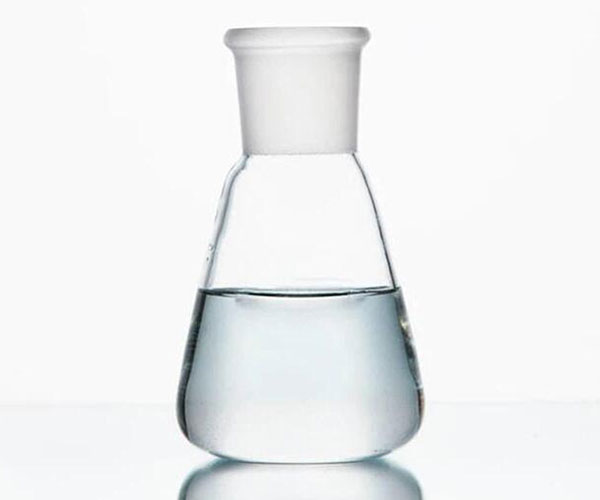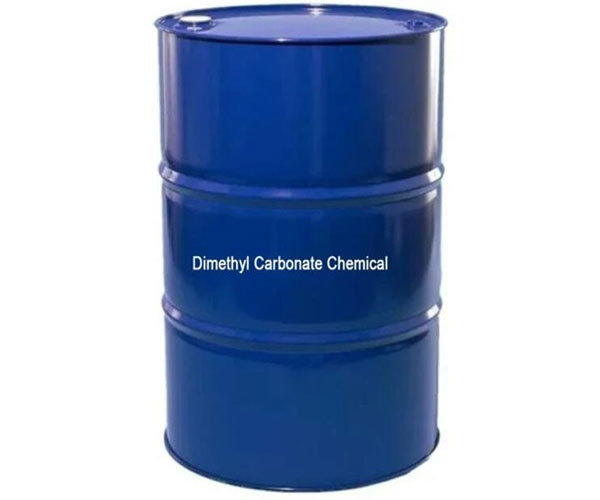Dimethyl carbonate (DMC)


Dimethyl carbonate (DMC) Solvent
Dimethyl carbonate (DMC) is transparent liquid at room temperature, slightly fragrant. It is insoluble in water, but can be mixed with alcohols, ketones, esters and other materials in any ratio. With the improvement of environmental protection requirements and the development of new energy fields, dimethyl carbonate has broad application prospects. Its application in lithium batteries, clean fuels and other fields will further promote its market demand.
- CAS NO.:24389-25-1
- HS C:2920900090
- EINECS No.:643-080-8
- Molecular Formula:OC(OCH3)2
- Molecular Weight:90.08
- Appearance:Colourless liquid
Technical Specifications
| Item | Dimethyl Carbonate |
| Appearance | Clear, colorless liquid |
| Boiling Point | 90 °C (194 °F) |
| Density | 1.06 g/cm3 @ 25 °C (77 °F) |
| Dynamic Viscosity | 0.66 mPa.s @ 20 °C (68 °F) |
| Flash Point | 14.4 – 18 °C (57.9 – 64 °F) |
| Lower Explosion Limit | 4.2 %(V) |
| Melting Point | 2 – 4 °C (36 – 39 °F) |
| Odor | characteristic |
| Relative Density | 1.064 – 1.069 @ 25 °C (77 °F) Reference Material: (water = 1) |
| Vapor Pressure | 18 mmHg @ 20 °C (68 °F) |
Main Applications of Dimethyl carbonate DMC
Fuel additive. DMC solvent is an excellent gasoline and diesel additive that can increase the oxygen content of fuel, improve combustion performance, and reduce fuel consumption and emissions.
Solvent. Due to its good solubility and volatility, DMC can be used as a solvent in paints, coatings, inks, resins, adhesives and other industries.
Synthetic raw materials. As an important organic chemical intermediate, it has a wide range of applications in the field of organic synthesis due to its unique molecular structure and excellent performance. DMC liquid is an important raw material for synthesizing carbamate pesticides, medicines, dyes, etc. It can also be used to synthesize organic compounds such as diethyl carbonate, ethylene glycol, and polycarbonate.
Clean fuel. DMC itself can also be used as a clean fuel, with the advantages of high calorific value, low pollution, and easy storage.
Its molecular structure contains carbonyl, methyl, methoxy and carbonyl methoxy groups, which enable it to participate in a variety of reactions such as carbonylation, methylation, methoxylation and carbonyl methylation. Therefore, DMC dimethyl carbonate is widely used in the production of various chemical products such as isocyanates and polyurethanes.
At the same time, due to its non-toxic and environmentally friendly characteristics, DMC solvent can also replace highly toxic phosgene(like methyl chloroformate) as a methylating agent or carbonylating agent to improve production safety and reduce environmental pollution.
The Specific Role of Dimethyl Carbonate Solvent in Electrolyte
-
Conducting ions
The electrolyte plays the role of conducting ions in the battery, ensuring that the charge between the positive and negative electrodes can be smoothly transferred. As an electrolyte solvent, DMC liquid carries lithium ions and other electrolyte ions to ensure that the electrolyte can flow smoothly, thereby ensuring the normal operation of the battery.
-
Improve conductivity
DMC dimethyl carbonate has good solubility and can dissolve more electrolytes, improving the conductivity of the electrolyte. This allows the electrolyte to disperse the electrolyte more evenly inside the battery, forming a good conductive environment.
-
Reduce viscosity
Dimethyl carbonate solvent has a lower viscosity, which allows the electrolyte to flow more smoothly inside the battery, thereby speeding up ion transmission and improving the power performance of the battery. This helps to improve the reaction sensitivity and power performance of the battery.
-
Improve battery safety
DMC can inhibit the passivation and corrosion of metallic lithium, form a stable solid electrolyte interface film (SEI film), prevent further side reactions between electrode materials and electrolytes, and improve the safety and stability of the battery.
-
Adapt to high energy density battery systems
Dimethyl carbonate has a wide electrochemical window and can work stably at higher voltages, adapting to the requirements of high energy density battery systems, and helping to improve the energy output and utilization efficiency of the battery.
Production Process of Dimethyl Carbonate DMC Solvent
Transesterification method. CO2 and ethylene oxide or propylene oxide are used as raw materials, and the by-product is ethylene glycol or propylene glycol, which has environmental advantages.
Methanol oxidation carbonylation method. The raw materials are easy to obtain, the process is simple, and the product purity is high. It is the most commonly used method in industry.
Contact Us
Have any need about new-energy materials? Feel free to contact us at any time.
- Phone: +86-371-55091002
- Whatsapp: +8618624832876
- Wechat: +8618624832876
- Email: Sales@mgm-batterymaterials.com
- Address: NO.283 XISANHUAN ROAD,HIGH-TECH INDUSTRIALDEVELOPMENT ZONE,ZHENGZHOU,HENAN,CHINA.
